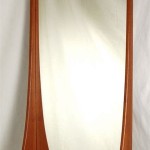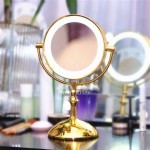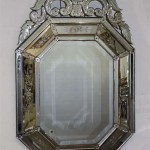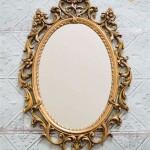The Mirror in a Dark Room Experiment: Delving into the Nature of Visual Perception
The "Mirror in a Dark Room" experiment is a captivating thought experiment that delves into the complexities of human visual perception. It is a powerful demonstration of how our brains actively interpret and construct our experience of the world, going beyond simply passively receiving and processing sensory information. This experiment presents a scenario that challenges our assumptions about what we see and how we see it, highlighting the fundamental interplay between the physical world and our cognitive processes.
The Experiment's Setup
Imagine you are in a completely dark room. The only source of light is a mirror positioned in front of you. The mirror reflects a single point of light, creating an illusion of a luminous object. You are asked to focus on this reflected light, observing its apparent size, shape, and position. Under these conditions, the human brain lacks visual cues that would typically help determine the true distance and size of an object. Without the contextual information provided by the surrounding environment, the reflected light is perceived differently than it would be in a well-lit room.
The Phenomenon of Visual Illusions
The Mirror in a Dark Room experiment demonstrates the phenomenon of visual illusions, where our perceptions deviate from physical reality. In this scenario, the brain is forced to rely on limited sensory input, leading to misinterpretations. The reflected light appears larger and closer than it actually is. This happens because the brain lacks the usual depth cues provided by shadows, perspective, and binocular vision. Without these cues, the brain struggles to accurately estimate distance and size, leading to an illusory perception.
The Role of Cognitive Processes
This experiment underscores the active role of cognitive processes in visual perception. The brain isn't simply a passive receiver of sensory data; it actively interprets and constructs our visual experiences. This is evident in how the brain makes assumptions about the reflected light, filling in the gaps of missing information based on previous experiences and expectations. The brain's tendency to interpret the reflected light as an object, rather than simply light reflected from a surface, highlights the inherent biases and assumptions that shape our perceptions.
Implications for Understanding Perception
The Mirror in a Dark Room experiment has significant implications for understanding visual perception and how our brains work. It suggests that our experience of the world is not a direct reflection of reality but rather a complex interplay between sensory input and cognitive processes. This experiment prompts deeper reflection on the limitations of our perceptions and the ways in which our brains actively shape our understanding of the world around us. By challenging our assumptions about visual perception, this thought experiment encourages us to appreciate the intricate workings of our minds and the remarkable ways in which we make sense of the world we inhabit.

Mirror Gaze Experiment Antony Hall

Mirror Gaze Experiment Antony Hall

The Science Behind A One Way Mirror Primary School Tuition Smart Student

Science Fair Project Easy Light Maze Experiments For Kids

Penrose Unilluminable Room Is Impossible To Light

Why You See Monsters In The Mirror

The Science Behind A One Way Mirror Primary School Tuition Smart Student

Build An Infinity Mirror And Create Optical Illusions Science Project

Build An Infinity Mirror And Create Optical Illusions Science Project
Mirror Phenomenon Concentric Halos Around Eyes In A Foggy Bathroom








